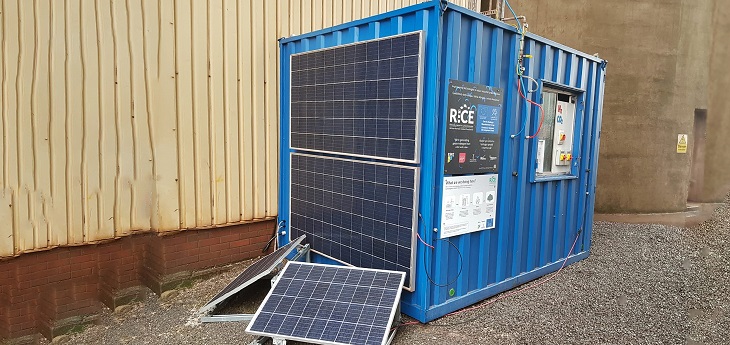While water scarcity could be an issue, researchers from Germany's NewClimate Institute and Fraunhofer ISI have pinpointed Mongolia as a nation with abundant potential for producing affordable green hydrogen. “We find that green hydrogen could be produced relatively affordably, at $3.30-4.70/kg … compared to a global average [cost] of $4.80/kg in 2020,” stated an announcement on Friday about the research. “The … optimal location for green hydrogen production with respect to … cost effectiveness, is in the South Gobi region.” The researchers suggested heavy-duty mining vehicles could drive demand for the gas. “As most [of Mongolia's] mining activities are located in the South Gobi area, green hydrogen can be produced at lowest cost close to the end-use site[s] and, therefore, has the advantage of not having to develop any transportation infrastructure for the green hydrogen, which otherwise could significantly impact the cost-effectiveness,” added the authors of the study.
U.K.-based energy company Chariot has signed a memorandum of understanding with the government of Mauritania to develop up to 10 GW of solar and wind-powered green hydrogen. “Benefiting from Mauritania’s world class solar and wind resources, Project Nour has the potential to allow Mauritania to produce the cheapest green hydrogen in Africa and to become one of the world’s main producers and exporters of green hydrogen and its derivative products, close to potential, large European markets,” Chariot wrote yesterday, adding Project Nour has secured exclusivity for pre-feasibility and feasibility studies for an onshore and offshore area of around 14,400km.
The U.K. and Welsh governments have approved the £58.7 million ($80.4 million) Swansea Bay City Deal’s Supporting Innovation and Low Carbon Growth program, which comprises seven projects, one of which concerns hydrogen. The latter project aims to enable “a demonstrator to prove [the] commercial viability of carbon-free hydrogen supply to fuel hydrogen vehicles,” and includes Swansea University as a partner. The university this year joined cement maker Hanson UK to install a green hydrogen demonstration unit at the latter’s Regen GGBS plant in Port Talbot, South Wales.
U.K.-based offshore engineering business Aquaterra Energy has signed a partnership with renewable hydrogen producer Lhyfe and offshore drilling contractor Borr Drilling to develop a concept for offshore green hydrogen production in the North Sea. “The organizations behind Project Haldane will develop an industrial scale offshore green hydrogen production concept through the deployment of an electrolyzer system on a converted jack-up rig,” read an announcement last week. The aim is to solve the challenges of grid connectivity to exploit North Sea wind, “providing an off take for the electricity produced in the immediate vicinity of the wind farm.”
Nuclear and renewables are both needed for electricity and hydrogen production, to cut dependency on fossil fuels, power analyst Aurora Energy Research wrote in a report on Saturday. The statement read: “Together, nuclear and renewables can provide the hydrogen volumes needed for net zero in 2050. Deploying large volumes of nuclear alongside renewables is economically efficient, reducing the net present value of total system spend by 6-9% (£40-60 billion [$54.8-82.2 billion]) to 2050.” According to the report, commissioned by British energy company Urenco, cumulative greenhouse gas emissions to 2050 can be reduced by 80 MtCO2e and gas usage in power and hydrogen by 8 PWh.
Swedish–Swiss technology company ABB and China’s PERIC Hydrogen Technologies have signed a memorandum of understanding to accelerate the adoption of hydrogen as an energy source. “Both companies will explore how integration of ABB’s automation, electrification and digital solutions with PERIC’s electrolyzers can help reduce hydrogen generation costs in the future,” ABB wrote today. The aim is for a detailed action plan and specific agreement to be defined within three months. ABB highlighted a focus on automation, electrification, digital solutions, rectifiers, distributed control systems, energy management, advanced analytics, instrumentation and telecommunication.
Saudi Arabian energy company Aramco, U.S.-based Air Products, and Saudi utility ACWA Power have announced agreements for the acquisition and project financing of a $12 billion air separation unit (ASU), gasification and power joint venture (JV) in Jazan Economic City, Saudi Arabia. “The JV is purchasing the ASUs, gasification, syngas clean-up, utilities and power assets from Aramco,” the partners announced yesterday. “The JV owns and operates the facility under a 25-year contract for a fixed monthly fee. Aramco will supply feedstock to the JV, and the JV will produce power, steam, hydrogen and other utilities for Aramco.”
This content is protected by copyright and may not be reused. If you want to cooperate with us and would like to reuse some of our content, please contact: editors@pv-magazine.com.



4 comments
By submitting this form you agree to pv magazine using your data for the purposes of publishing your comment.
Your personal data will only be disclosed or otherwise transmitted to third parties for the purposes of spam filtering or if this is necessary for technical maintenance of the website. Any other transfer to third parties will not take place unless this is justified on the basis of applicable data protection regulations or if pv magazine is legally obliged to do so.
You may revoke this consent at any time with effect for the future, in which case your personal data will be deleted immediately. Otherwise, your data will be deleted if pv magazine has processed your request or the purpose of data storage is fulfilled.
Further information on data privacy can be found in our Data Protection Policy.